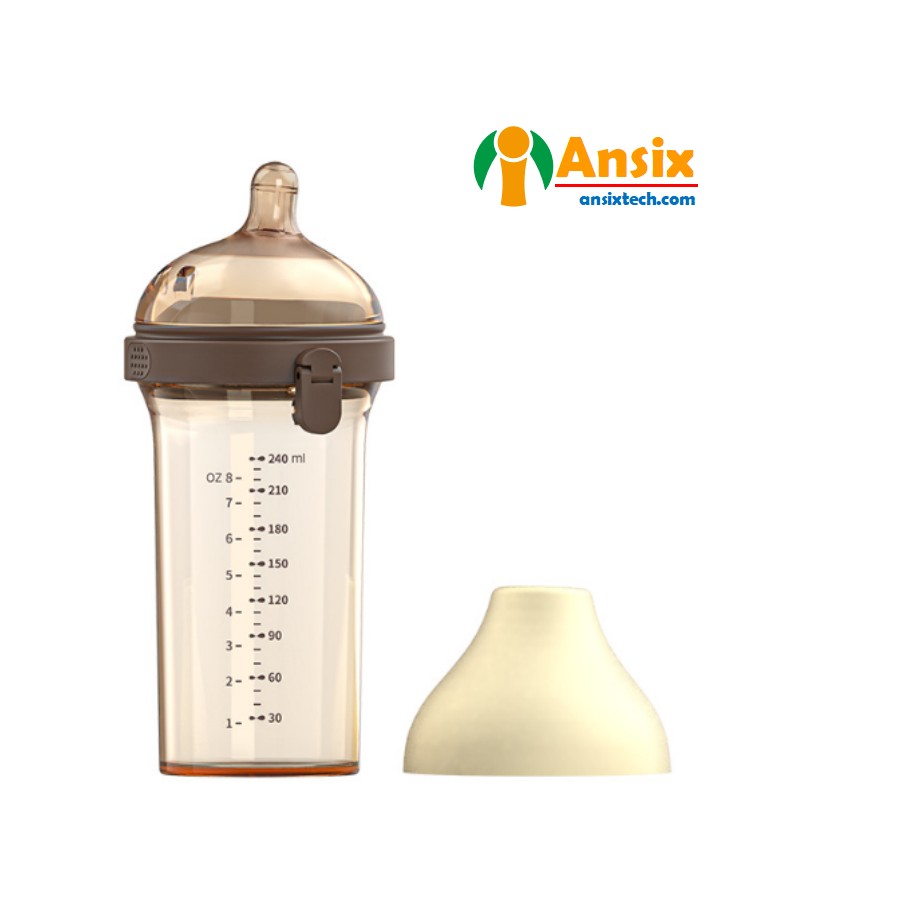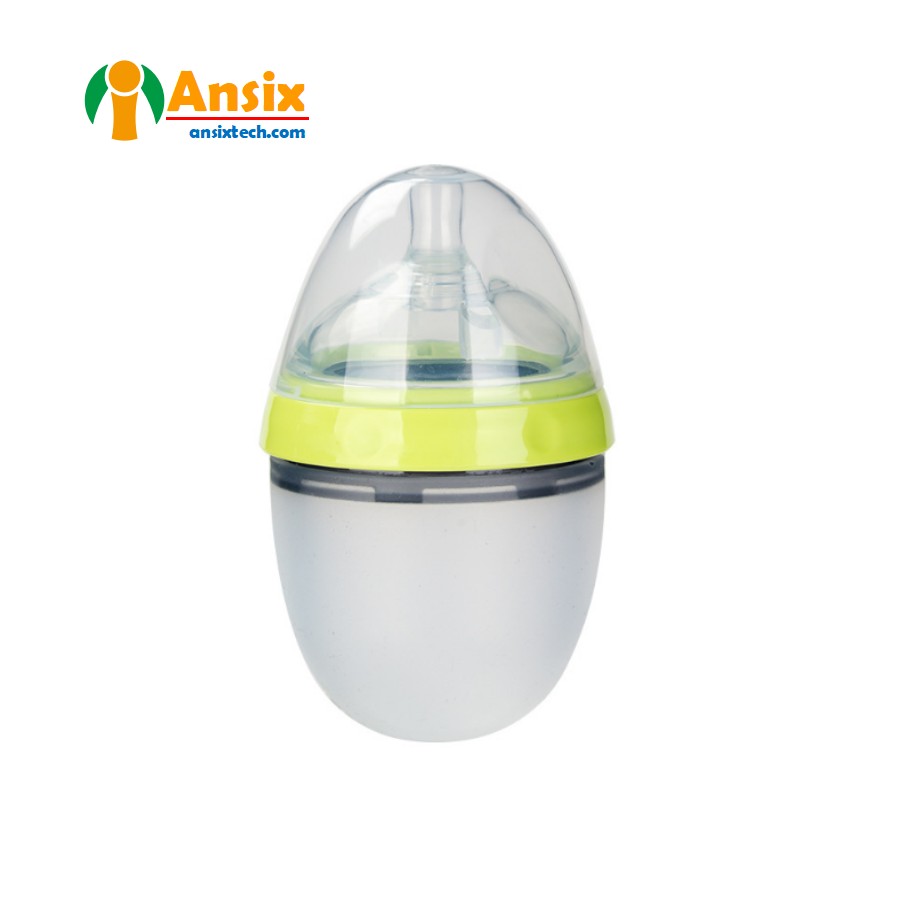Baby Feeding Bottles
FEATURES
-
Baby bottles are designed to meet the feeding needs of infants and provide a comfortable use experience. Here are some key elements and features of baby bottle design.Safety: The design of baby bottles focuses on product safety. They are usually made of food-grade materials, such as non-toxic polypropylene (PP) or polyethylene (PE). These materials do not contain harmful substances and meet food safety standards to ensure the health and safety of babies.Comfort: The design of baby bottles takes into account the baby’s oral structure and sucking needs. They usually have an ergonomic shape and size to ensure that the baby can hold and suck comfortably. Some baby bottles also feature soft nipples that simulate the feel of breast milk, providing a more natural feeding experience.Anti-colic design: The design of baby bottles usually takes into account the problem of preventing babies from swallowing air and colic. Some baby bottles are equipped with special anti-colic systems, such as vents or anti-colic valves at the bottom of the bottle, which can reduce gas and discomfort.Easy to clean and maintain: Baby bottles should be designed to be easy to clean and maintain. They usually have simple structures and removable parts for easy cleaning and disinfection. Some baby bottles also feature drip-proof designs to reduce spills and waste.Durability and durability: Baby bottles should be designed to be durable and able to withstand prolonged use and cleaning. They are usually made of wear-resistant and high-temperature-resistant materials to ensure product quality and stability.The design of baby bottles focuses on product safety, comfort, anti-colic design, easy cleaning and maintenance, as well as durability and durability. These design features are designed to meet infant feeding needs and provide a comfortable and safe use experience. The design of baby bottles should also take into account the baby’s oral structure and sucking needs to provide a more natural and developmentally appropriate feeding method.

- Baby Feeding Bottles of the mold manufacturing process and product material selectionThe production of baby bottles involves mold design, mold flow analysis, mold manufacturing and processing of the nipple and bottle body, as well as material selection, LSR nipple molding, bottle body injection blow processing, secondary processing, assembly, packaging and other links. These aspects will be introduced one by one below.Nipple and bottle mold design and mold flow analysis:The mold design of nipples and bottles needs to take into account factors such as the shape, size and structure of the product. Mold design should meet the functional needs and production requirements of the product to ensure product consistency and stability. Mold flow analysis can predict the heat flow, air flow and material flow during the mold filling process, as well as possible defects and problems, and help optimize mold design and manufacturing.Mold manufacturing and processing:Mold manufacturing and processing is a work based on mold design and mold flow analysis results. It includes mold material selection, CNC machining, EDM, wire cutting and other processes to create molds that meet design requirements.Selection of bottle and nipple materials:Material selection for bottles and nipples is determined based on product needs and applications. Common materials include food-grade plastic materials such as polypropylene (PP) and polyethylene (PE). These materials have good heat resistance, corrosion resistance and durability and meet food safety standards.LSR nipple molding:LSR (Liquid Silicone) nipple molding is a commonly used nipple production process. It uses liquid silicone injection molding technology to create a soft, durable and safe nipple. LSR nipple molding offers the advantages of high precision, efficiency and consistency.Bottle injection and blowing processing:Bottle body injection blow processing is a common process for manufacturing baby bottle bodies. It manufactures the bottle body by heating thermoplastic material to a molten state and then injection blow molding it. Bottle injection and blow processing has the advantages of high efficiency, low cost and consistency.Secondary processing, assembly and packaging:In the production process of baby bottles, secondary processing, assembly and packaging are also required. Secondary processing includes processes such as removing mold marks and trimming edges. Assembly involves bringing the teat and bottle together to ensure product integrity and functionality. Finally, the product is packaged to protect its quality and hygiene.ISO8 dust-free workshop produces milk bottles:In order to ensure product quality and hygiene, the production of baby bottles is usually carried out in ISO8 dust-free workshops. The dust-free workshop has strict air filtration and control systems to reduce dust and microbial contamination and ensure product hygiene and safety.The production of baby bottles involves mold design, mold flow analysis, mold manufacturing and processing of the nipple and bottle body, as well as material selection, LSR nipple molding, bottle body injection blow processing, secondary processing, assembly, packaging, etc. link. These processes and measures ensure the quality, safety and hygiene of the bottles.
- Baby Feeding Bottles Mass production and Quality controlMass production of baby bottle nipples and bottles can be achieved through injection molding mass production to improve production efficiency, reduce costs, and ensure product safety and quality.Advantages of injection molding mass production:Injection molding batch production is an efficient and precise production process suitable for mass production of baby bottle nipples and bottles. It has the following advantages:Efficient production: Injection molding can achieve fast and continuous production, greatly improving production efficiency.Consistency and stability: Injection molding can ensure product consistency and stability, with each product having the same size, shape and appearance quality.Complex shapes and details: Injection molding can produce products with complex shapes and details to meet design requirements.Improvement of production efficiency:In order to improve production efficiency, the following measures can be taken:Automated equipment configuration: introduce automated equipment and production lines to achieve efficient operation of automated injection molding and production processes, reduce manual operations and increase production speed.Parallel production: Parallel production is adopted to carry out multiple processes at the same time to shorten the production cycle.Optimize process flow: Improve production efficiency and quality by optimizing injection molding process parameters, adjusting production flow and process control.Process cost control:To control process costs, you can do the following:Raw material procurement optimization: Cooperate with suppliers to optimize raw material procurement and reduce costs.Equipment maintenance and management: Regularly maintain and manage production equipment to ensure the normal operation and life of the equipment and reduce repair and replacement costs.Energy and resource management: optimize the use of energy and resources, reduce waste and costs.Product safety and quality assurance:During the injection molding mass production process, it is necessary to pay attention to product safety and quality. The following measures can be taken:Material selection: Choose materials that meet food-grade and medical-grade safety standards to ensure product safety.Quality control plan: Develop a quality control plan to clarify the quality requirements and control methods for each link.Inspection and testing: Conduct product inspection and testing, such as appearance inspection, dimensional measurement, functional testing, etc., to ensure that the product meets the requirements.Process monitoring: Monitor the production process, such as temperature control, injection pressure control, etc., to ensure product consistency and stability.In summary, the mass production of baby bottle nipples and bottles can be achieved through injection molding mass production to improve production efficiency, reduce costs, and ensure product safety and quality. Through measures such as automated equipment configuration, process optimization, process cost control and product quality assurance, efficient, stable and high-quality mass production can be achieved.





